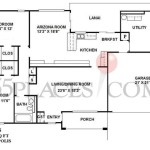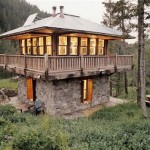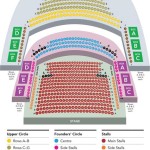Insulated Dog House Plans DIY: A Comprehensive Guide
Building an insulated dog house provides a comfortable and safe haven for canine companions, especially during harsh weather conditions. This article serves as a comprehensive guide for constructing a DIY insulated dog house, covering essential aspects from planning and material selection to construction and finishing touches.
The initial step involves meticulous planning. Determining the appropriate size is crucial. The dog house should be large enough for the dog to stand, turn around, and lie down comfortably, yet small enough to retain body heat effectively. Consider the dog's breed, size, and anticipated growth when deciding on dimensions.
Choosing the right materials impacts the insulation and durability of the dog house. Exterior walls can be constructed from weather-resistant materials like pressure-treated lumber, plywood, or cedar. For insulation, rigid foam insulation boards, such as extruded polystyrene (XPS) or expanded polystyrene (EPS), offer excellent thermal performance. Avoid using fiberglass insulation due to potential health risks for the dog.
Several insulation methods can be employed. One effective method involves creating a double-walled structure with insulation sandwiched between the inner and outer walls. This creates an air gap that further enhances insulation. Ensure all seams and gaps are properly sealed to prevent drafts and moisture infiltration.
Constructing the dog house begins with building a sturdy base. Elevating the floor slightly off the ground helps prevent moisture buildup and improves insulation. The base can be constructed from pressure-treated lumber, creating a frame that supports the floor and walls.
Framing the walls involves cutting the chosen exterior material to the planned dimensions. Assemble the wall frames using appropriate fasteners, ensuring square corners and a level structure. Attach the wall frames to the base frame, creating a secure and stable structure.
Once the walls are framed, install the chosen insulation material. Cut the insulation boards to fit snugly between the wall studs or create a continuous layer against the inner or outer wall sheathing, depending on the chosen insulation method. Secure the insulation in place with adhesive or mechanical fasteners.
Constructing the roof requires careful consideration of slope and overhang. A sloped roof allows for proper water runoff, preventing leaks and moisture accumulation. Adequate overhang provides shade and protection from the elements. The roof can be constructed from plywood sheathed with asphalt shingles or other weather-resistant roofing materials.
Adding a door to the dog house provides further protection from the elements and creates a sense of security for the dog. The size of the door should be appropriate for the dog's size, allowing easy entry and exit. The door can be constructed from the same material as the walls and insulated similarly.
Finishing touches enhance the dog house's functionality and aesthetics. Caulking all seams and gaps prevents drafts and moisture intrusion. Painting the exterior with weather-resistant paint protects the wood and adds a personalized touch. Consider adding features like a removable roof for easy cleaning and ventilation.
Proper ventilation is essential for maintaining a healthy environment inside the dog house. Ventilation holes should be strategically placed to allow for air circulation without compromising insulation. Positioning the ventilation holes near the roof peak allows for efficient removal of warm, moist air.
Regular maintenance ensures the longevity and effectiveness of the insulated dog house. Inspect the structure periodically for signs of damage or wear. Repair any cracks or gaps promptly to prevent moisture infiltration and maintain insulation integrity. Clean the dog house regularly to ensure a hygienic environment for the dog.
Choosing the right location for the dog house is also crucial. Position the dog house in a sheltered area, protected from prevailing winds and excessive sunlight. Consider proximity to the owner's house for ease of access and monitoring.
Different climates necessitate specific considerations for insulated dog house construction. In colder climates, thicker insulation and smaller door openings are recommended to maximize heat retention. In warmer climates, prioritizing ventilation and shade becomes more important. Adapting the design to suit the specific climate ensures the dog's comfort and well-being.
Several online resources offer pre-designed insulated dog house plans, providing detailed instructions and material lists. These resources can be invaluable for DIY enthusiasts seeking guidance and inspiration. Adapting existing plans to individual needs and preferences allows for customization and personalization.
Building an insulated dog house is a rewarding project that provides a comfortable and safe environment for beloved canine companions. Careful planning, material selection, and meticulous construction ensure a durable and effective structure that protects the dog from the elements. Regular maintenance and appropriate placement further enhance the dog house's functionality and longevity.

Insulated Dog House Diy Plans

Cold Weather Dog House Plans Bradshomefurnishings Winter Diy Insulated

How To Build A Custom Insulated Dog House Ron Hazelton

14 Diy Dog Houses How To Build A House Plans Blueprints

How To Build An Insulated Dog House Howtospecialist Step By Diy Plans

How To Build A Diy Insulated Dog House Wilker Do S

Diy Insulated Dog House With Porch Myoutdoorplans

Dog House Plans Free Diy Projects Construct101

How To Build An Insulated Or Heated Doghouse Easy Diy

Insulated Dog House Plans Wilker Do S








